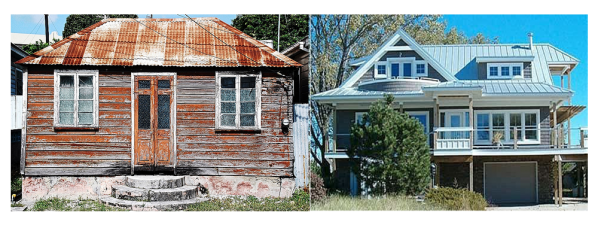Global Zinc Drivers: Synopsis
Global Drivers were produced in 2010/2011. We will be releasing summaries of the reports on our blog, Orenthink.

Introduction
We are excited about zinc because we feel supply is limited due to mine capacity and demand will stay relatively robust in any economic scenario.
In the short term, zinc production will be driven by the shutdown of significant mines like Century and a limited number of new mines being built to replace them. However, market visibility is confused by the fact that there are resources in the world that can be developed, and the market can and will stay in oversupply if any major company’s focus is turned onto them. However, we feel that most majors do not really care about the zinc market even when prices spike.
We believe that there will be a global renaissance due to a supply shortage for zinc from about 2012 to 2016, but supply will equal demand in the longer term. We think zinc assets are attractive because the market has not priced in supply shortage, but metallurgy, location, and permitting are going to be the three major drivers when deciding which assets to buy.
What Is Zinc? Zinc is the fourth most-produced metal worldwide, surpassed only by iron, aluminum, and copper. It has a variety of uses, such as in alloys, batteries, dietary supplements (or poison, depending on how much), paints, pennies, and on lifeguards’ noses, but the primary end use for zinc metal is to galvanize steel.
Supply Thesis: Current annual zinc metal production is around 11 million metric tons, of which about 70 percent comes from mines and the other 30 percent from recycling. Currently supply is stable, but mines are shutting down. There is no shortage of zinc in the ground, but there is a shortage of mines that are able to mine it economically, as well as good zinc projects that could turn into mines.
Due to the decades-long oversupply in the zinc market, there has been a lack of interest in the development of zinc properties. Zinc has been a low-margin, lousy business and pretty much ignored by every major mining company. This historic lack of attention, along with the crash of 2008 and the planned shut-down of a significant amount of zinc supply, has created a looming shortage, and with the exception of Hindustan Zinc, no one seems to care, which has resulted in few new large-scale projects that are close to development.
China is currently the world’s largest producer of zinc, and their recent involvement in close to 20 foreign zinc projects has us convinced that they know something we don’t about their domestic zinc supply. We, of course, would not dare go out and look at their resources, but clearly either they are running out, or they are getting into very high-cost marginal resources, or both. The general market does not yet share our view of China being zinc-constrained. The counter-thesis to our view is that China is completely awash with zinc and is buying projects to stonewall them and keep supply constrained. Our problem with this counter-thesis is that the sheer amount of investment China is putting into these projects is not going to slow them down, but speed them up.
We see the market remaining in slight oversupply for the next year or two, followed by continued growth in zinc demand but supply becoming constrained, creating a good medium-term outlook for zinc prices.
]
Figure 2: Due to the imminent closures of many of the largest zinc mines in the world, over the next decade the current projects on the drawing board are only going to be able to keep supply relatively flat, not increasing. The red, blue, and green bars show the relative amount of production expected to be gained and lost, and the purple bar shows the net change in zinc supply for that year.
Demand Thesis: Zinc demand is pretty simple. China, India, Brazil, Egypt, Indonesia, Tajikistan, and other developing nations are all growing and want to increase urbanization, industrialization, and bling-ification. This will increase zinc demand twofold for two main reasons.
The first reason is fairly straightforward: these nations’ new 2- to 50-story high-rises, bridges, cars, railroads, and soccer stadiums require large amounts of steel. The US, Western Europe, and Japan already have all of these wonderful things in ample supply, and we don’t see significant new demand for steel in these nations driving global growth.
The second reason is that developing nations are also (presumably) going to making more galvanized steel as a percentage of their total steel production. In 2006 only roughly 20 percent of steel production in China was galvanized steel, as opposed to 50 to 60 percent in the developed world.
Figure 5: World zinc supply and demand estimates until 2020. The no-growth estimate assumes zinc demand stays at 2009 levels. This is possible but not likely. The low-growth estimate assumes no developed world growth, 1 percent growth in China, and 3 percent growth elsewhere. The Oreninc View, assumes 1 percent growth in the developed world, 3 percent growth in China, and 6 percent growth everywhere else.
Conclusion: Everyone has their own view about zinc. Ours is that we need it, and soon our mines will not be able to provide enough of it. Just as the global economy begins to recover and developing nations continue to expand, our largest and best zinc mines are closing. It will take time to discover, permit, and turn on new mines, and most will not be of the scale to replace those that are going off-line.
Because of this, we feel that almost any semi-decent zinc project that has the permits and the metallurgy and can get into production before 2020 will be developed, regardless of size.
In the longer term, post-2020, we see the zinc market returning to a general balance, either through increasing supply or adjusting demand, and we feel that once again, nobody will care about zinc.


Comments